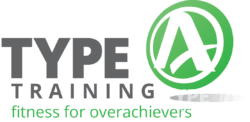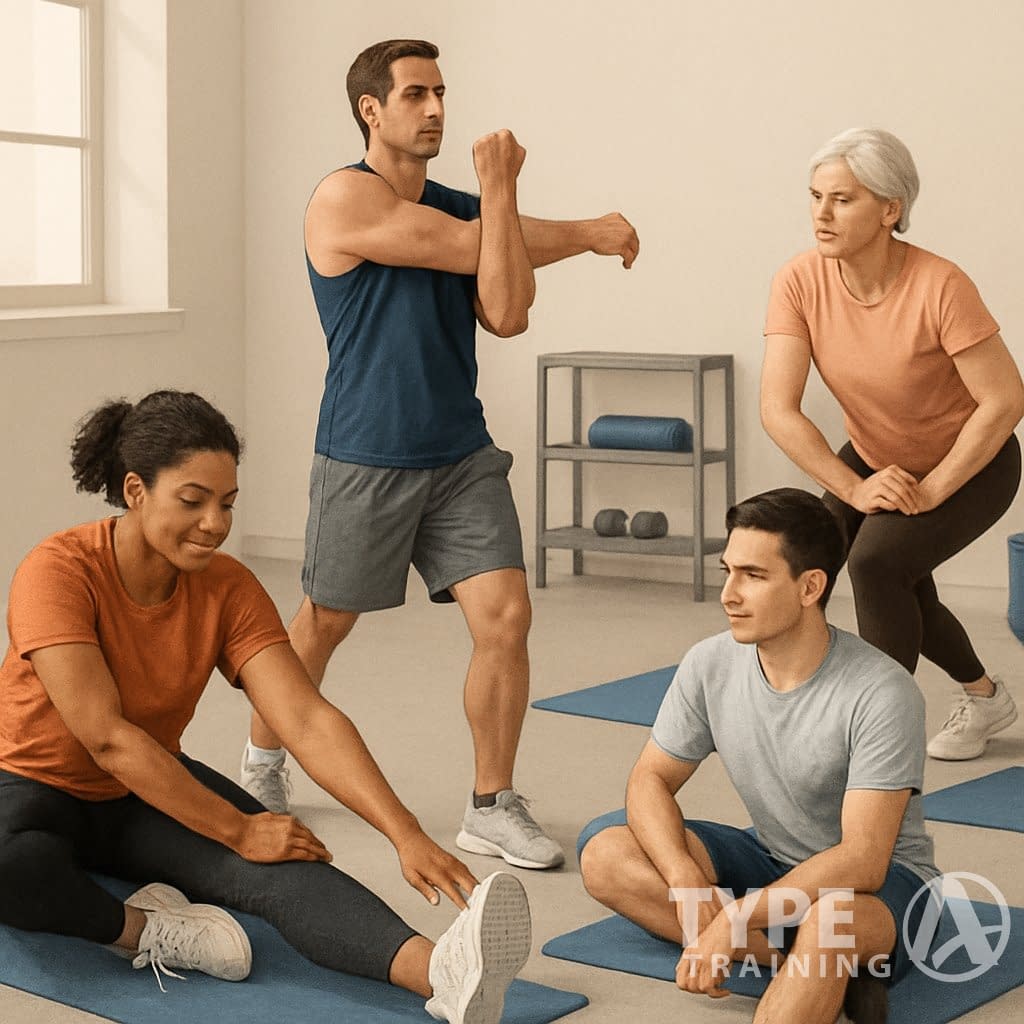Stretching often gets ignored, but honestly, it’s a game-changer for any workout routine. People are always asking when and how to stretch the right way, including the proper stretching techniques.
Proper stretching not only helps prevent injuries, but it also boosts your overall performance and flexibility when you time it well.
Before you exercise, try a light 5-10 minute warm-up and then do some dynamic stretches to get your muscles ready. Save static stretches for after your workout, when your muscles are already warm.

Popular posts:
The timing of your stretches honestly makes a big difference. Research shows that static stretching (holding a position) before workouts can actually lower your performance, while dynamic stretching (moving through stretches) works better as a warm-up.
Incorporating proper stretching techniques into your routine can enhance your flexibility and performance.
After you’re done, your muscles are warm and ready for deeper, static stretches that help improve flexibility and aid recovery.
Keep your stretches gentle and controlled. Don’t bounce or force anything—hold each stretch for about 30 seconds.
Working stretching into your fitness routine can help you feel better, get more out of your workouts, and stay mobile for years to come.
Key Takeaways
- Warm up with light activity, then use dynamic stretches before workouts and static stretches afterward for best results.
- Hold stretches for about 30 seconds, don’t bounce, and stop if you feel pain—mild tension is enough.
- Stretching the right way improves flexibility, boosts performance, speeds up recovery, and helps you avoid injuries, especially when using proper stretching techniques.
The Science Behind Stretching

Stretching taps into some surprisingly complex stuff inside your body. It affects your muscles, your blood flow, and even how you recover after exercise.
How Stretching Affects Your Muscles
When you stretch, two types of muscle receptors get involved: muscle spindles and Golgi tendon organs. Muscle spindles spot changes in muscle length and can make your muscle contract if you stretch too fast—so sudden, jerky stretches can actually make you tighter. Weird, right?
Your muscles get shorter and tighter if you don’t stretch regularly. This tightness limits your range of motion and can cause joint pain or even muscle damage when you’re active.
Regular stretching keeps muscles flexible, strong, and healthy. Dynamic stretching, which uses movement, wakes up your muscles and gets them ready to work. But if you do static stretching before a workout, it can actually make you weaker for a little while.
One study found static stretching could reduce quadriceps force by almost 10%, and the effect can last a couple of hours.
The Role of Blood Flow and Circulation
Stretching really cranks up blood flow to your muscles. That means more oxygen and nutrients get delivered to the tissues that need them most.
When you stretch, your blood vessels open up and let more blood through. This helps:
- Deliver oxygen to your muscles
- Clear out waste from exercise
- Bring in nutrients for repair
- Keep your muscles at a good temperature
Warming up with stretching raises muscle temperature, making contraction smoother and lowering injury risk. After a workout, that extra blood flow helps you recover by flushing out stuff your body doesn’t need.
And hey, if you keep stretching regularly, your circulation could get better overall—not just in your muscles.
Lactic Acid and Muscle Soreness
Lots of folks blame lactic acid for post-workout soreness, but that’s not really true. The real culprit is Delayed Onset Muscle Soreness (DOMS), which comes from tiny tears in your muscle fibers after you push yourself.
Stretching after exercise can help with DOMS by:
- Boosting blood flow to clear out waste
- Bringing muscles back to their normal length
- Preventing muscle fibers from sticking together
Gentle stretching keeps muscles from getting stiff while your body repairs those small tears. It’s not a magic fix, but it helps.
Stretching won’t erase all soreness, but if you do it consistently, studies say it can speed up recovery. Mixing dynamic stretches before and static stretches after workouts is your best bet for managing soreness.
Types of Stretching Techniques
There’s more than one way to stretch, and knowing the difference can make your workouts way more effective. Each style has its own purpose.
Dynamic Stretching Methods
Dynamic stretching gets you moving—think swinging, circling, or lunging. These active moves get your blood pumping and your muscles warm, setting you up for whatever exercise is coming.
Try these dynamic stretches:
- Arm circles: Make bigger and bigger circles with your arms
- Walking lunges: Step forward into a lunge, keeping your back straight
- Leg swings: Swing your leg forward and back while balancing
- Hip rotations: Move your hips in circles to loosen them up
Dynamic stretching works best before workouts. Don’t hold the moves—keep them flowing and only pause for a second or two.
Static Stretching Explained
Static stretching is all about holding a position that targets a muscle group for 15-60 seconds. It’s great for flexibility and works best after your workout when you’re already warmed up.
Some go-to static stretches:
- Hamstring stretch: Sit, extend one leg, and reach for your toes
- Quad stretch: Stand, grab your foot, and pull it toward your butt
- Chest stretch: Extend your arm across your body or press it against a wall
- Shoulder stretch: Use one arm to pull the other across your chest
Feel tension, not pain. Breathe deep and try to relax into each stretch—let the muscle lengthen slowly.
Differences Between Dynamic and Static Stretches
So, what’s the real difference between dynamic and static stretches? It’s mostly about when you use them and how you do them.
| Feature | Dynamic Stretching | Static Stretching |
|---|---|---|
| When to use | Before workout | After workout |
| Movement | Continuous motion | Held position |
| Duration | Brief movements | 15-60 second holds |
| Primary benefit | Performance preparation | Flexibility improvement |
Dynamic stretches get your body ready by increasing mobility and warming up muscles. They’re active and don’t last long.
Static stretches help muscles recover and improve flexibility. Do these after you exercise, when your muscles are warm. Using the wrong type at the wrong time? Not a good idea—it could hurt your performance or even lead to injury.
Benefits of Proper Stretching Before and After Workouts
Adding stretching to your routine can seriously upgrade your workouts and recovery. It’s one of those things that supports your body through every phase of being active.
Reducing Injury Risk
Stretching the right way gets your body ready by loosening up muscles, ligaments, tendons, and joints. Dynamic stretches before exercise warm up your muscles, making tears and strains less likely.
After you work out, stretching releases all that built-up tension. That’s what helps prevent soreness and stiffness in the day or two after you train.
Some studies say regular stretching can cut injury rates by up to 30% for people who exercise often. That’s a pretty big deal if you run, play sports, or just like to push yourself.
Enhancing Range of Motion
Stretching on the regular boosts your range of motion, so your joints can move like they’re supposed to. More mobility means you perform better—whether you’re working out, playing with your kids, or just living life.
When you keep stretching, you’ll notice:
- Better performance in sports or workouts
- Everyday moves feel easier
- Improved posture
- Happier joints
Dynamic stretching before you start increases blood flow to your muscles and joints. That means more oxygen and nutrients get where they’re needed, which helps you perform at your best.
As you age or spend more time sitting, your range of motion shrinks. Stretching helps you hang onto your mobility and keeps you moving freely.
Maximizing Flexibility and Mobility
Getting more flexible through regular stretching really pays off for your long-term physical health. When you stretch both before and after workouts, you’re taking a well-rounded approach to flexibility training.
Before workout benefits:
- Raises muscle temperature
- Gets your nervous system firing
- Preps joints for movement
- Helps with form and technique
After workout benefits:
- Speeds up recovery
- Keeps your flexibility gains
- Lowers muscle tension and spasms
- Stops muscle fibers from tightening up
For best results, hold static stretches for 15-30 seconds after your workout, when your muscles are already warm. That’s the sweet spot for getting a good stretch without risking your form or hurting yourself.
How to Warm Up Effectively Before Exercise
Warming up the right way gets your muscles ready and boosts blood flow. It preps your body for action and helps keep injuries at bay.
That little rise in heart rate and body temp? Super important.
Warm-Up Stretching Routines
Don’t rush your warm-up. Give yourself at least 5-10 minutes to get your body moving and ready for whatever you’re about to do.
Start with gentle moves that target the muscles you’ll use. For a full-body warm-up, try these:
- Arm circles: Spin both arms forward 10 times, then backward 10 times
- Torso twists: Stand with feet shoulder-width apart and gently rotate side to side
- Leg swings: Hold a wall for balance and swing one leg forward/back 10 times, then side to side 10 times
- Shoulder rolls: Roll shoulders forward 10 times, then backward 10 times
These pre-workout stretches help loosen up your joints and get your nervous system in gear.
Dynamic Movements to Prepare Muscles
Dynamic warm-ups keep you moving and mimic what you’ll do in your actual workout, just at a lower intensity. They’re a lot more active than just holding a stretch.
Try these to get your muscles ready:
- Walking lunges: Lunge forward for 10 steps
- High knees: March in place, knees to hip height, for 30 seconds
- Butt kicks: Jog in place, heels up, for 30 seconds
- Jumping jacks: Do 15-20 to get your heart rate up
These moves open up your range of motion and get your body ready for harder work. They’re a must, especially before lifting or anything high-intensity.
Gradually Increasing Blood Flow
Your warm-up should ramp up slowly to safely raise your heart rate. This way, you’re sending more oxygen and nutrients to your muscles.
Start with 2-3 minutes of light cardio, like:
- Walking
- Easy cycling
- Jogging in place
Then pick up the pace a bit for another 3-5 minutes. You want to breathe a little heavier, but still be able to chat if you need to.
By the end, you should notice:
- Body temp up (maybe a little sweat)
- Looser muscles and joints
- Feeling mentally ready to work out
This gradual build-up helps your heart and muscles get in sync for what’s next.
Essential Pre-Workout Stretching Exercises
Dynamic stretching before you work out gets your body moving and helps keep injuries away. These moves boost blood flow and get the right muscles firing for your session.
Arm Circles and Shoulder Mobilizers
Start with arm circles to fire up your shoulders and upper body. Stand with feet shoulder-width apart and arms out to your sides.
- Make small circles (about 6 inches wide)
- Do 10-15 forward
- Switch and do 10-15 backward
- Gradually make the circles bigger to open up more
For shoulder mobilizers, try cross-body arm swings. Swing one arm across your chest, gently pull it closer with your other hand, hold for a couple seconds, and let go. Do this 10 times per side.
Arm circles get your shoulders ready for anything—lifting, pushing, pulling, you name it.
Leg Swings for Lower Body Readiness
Leg swings are awesome for waking up your hips, hamstrings, and quads before any activity.
Forward and backward leg swings:
- Stand next to a wall for balance
- Swing one leg forward and back, controlled
- Start small, then swing higher as you loosen up
- Do 10-15 swings per leg
Side-to-side leg swings:
- Face a wall, hands on it for support
- Swing one leg side to side across your body
- Keep your core tight and back straight
- Switch legs after 10-15 swings
These get your hips moving and set you up for running, jumping, or squats.
Hip Circles and Core Preparation
Hip circles wake up your core and hip flexors. They’re perfect for getting your hips mobile and your abs engaged.
Here’s how you do them:
- Stand with feet shoulder-width apart, hands on hips
- Move your hips in a big circle
- Do 10 circles clockwise
- Switch and do 10 counterclockwise
For core prep, throw in some trunk rotations. Stand a bit wider than shoulder-width, arms out, and twist your upper body side to side. Keep hips forward and core tight.
Dynamic stretches like these get your muscles ready for whatever’s coming next.
Jumping Jacks and Full-Body Activation
Jumping jacks are a classic—they get your whole body moving and your heart rate up fast.
Here’s the basic move:
- Start standing, feet together, arms at sides
- Jump out, spreading legs and raising arms overhead
- Jump back to start
- Repeat 20-30 times at a steady pace
If regular jumping jacks are too much, try step jacks. Step one foot out while raising arms, then switch sides.
Mix in arm punches or knee lifts if you want to wake up even more muscles. These pre-workout moves get your blood flowing and prime you for whatever’s next.
Best Practices for Stretching After Your Workout
When you finish your workout, stretching right helps your body recover and keeps you flexible. Post-workout stretches can cut down on soreness and help you hang onto the progress you made.
Importance of a Cool Down
Cooling down matters just as much as warming up. Your body needs a minute to shift from high gear back to chill mode. Stretching after exercise helps your heart rate and body temp drop gradually.
After tough workouts, muscles can get tight and cranky. Cooling down keeps blood from pooling and helps you avoid feeling dizzy or lightheaded.
Research says cooling down can help with:
- Lowering lactic acid buildup
- Stopping muscle stiffness
- Boosting your range of motion
- Supporting long-term flexibility
Spend 5-10 minutes doing light stuff like walking or cycling before you stretch. That little transition makes recovery smoother.
How to Ease Muscle Tension and Aid Recovery
Static stretches are your go-to after a workout to loosen up tired muscles. Hold each stretch for 20-30 seconds and don’t bounce or force it. You want to feel a gentle pull, not pain.
Focus on the big muscle groups you just worked. For a full-body cool down, try:
- Hamstring stretches – Seated forward bends or standing toe touches
- Quadriceps stretches – Stand and pull your foot behind you
- Chest and shoulder stretches – Doorway stretches or cross-body arm pulls
- Lower back stretches – Gentle spinal twists or child’s pose
Take deep breaths while you stretch. Inhale slowly through your nose, exhale all the way out through your mouth. It helps you relax and sends more oxygen to your muscles. Not a bad way to end your workout, right?
Post-Workout Stretching Guidelines
Set up a post-workout routine you can stick with after every exercise session. Stretching works best when your muscles are still warm, so don’t let too much time pass after you finish moving.
For best results, try to:
- Stretch within 10 minutes of wrapping up your workout
- Hold each stretch for 20-30 seconds
- Repeat each stretch 2-3 times
- Zero in on the muscles you pushed hardest
- Keep everything slow and controlled—no racing through
Don’t overstretch or push until it hurts. You want to feel tension, not pain. Static stretching (just holding a position) works best after your workout, unlike the bouncy, dynamic stuff you do to warm up.
Stay hydrated, even during stretching. Water helps your muscles bounce back and can keep cramps or soreness at bay later on.
Static Stretches to Incorporate Post-Exercise
Once you finish your workout, static stretching helps you loosen up and shake off muscle tightness. These slow, steady stretches let your muscles relax and recover, and they can even help you move more freely next time.
Toe Touch and Hamstring Release
The classic toe touch is a go-to static stretch for your hamstrings and lower back. Here’s how you do it:
- Stand with your feet about hip-width apart
- Bend forward slowly at your hips
- Reach down toward your toes with your fingertips
- Hold the stretch—no bouncing
If you want something a little deeper, try the seated version. Sit down, stretch one leg out, bend the other so your foot’s against your inner thigh, and lean forward from your hips. Keep your back straight, not hunched.
You might feel a little discomfort, but pain is a no-go. Can’t touch your toes yet? No worries—grab your ankles or shins. Flexibility takes time.
Shoulder Stretch Techniques
Shoulders get tight, especially after upper body workouts. Try these moves to ease the tension:
Cross-Body Arm Stretch:
- Pull one arm across your chest
- Use your other hand to gently press your upper arm closer
- Relax your shoulders—don’t let them hunch up
Overhead Triceps Stretch:
- Lift one arm overhead, then bend your elbow
- Use your other hand to gently pull your elbow behind your head
- Keep your core tight and don’t arch your back
Clasped Hands Behind Back:
- Interlock your fingers behind your lower back
- Lift your hands away from your body, just a little
- Roll your shoulders back and down
These post-workout static stretches keep your shoulders moving well and help fend off injuries from all those reps.
Hold the Stretch: Timing and Safety
Timing matters for static stretching. Hold each stretch for 15-30 seconds to really get the benefit. If a muscle feels extra tight, you can hang out there up to 60 seconds.
Some safety reminders:
- Breathe naturally—don’t hold your breath
- No bouncing or forcing yourself further than feels right
- Look for gentle tension, not sharp pain
- As you warm up, you can ease a little deeper
- Repeat each stretch 2-3 times for best results
Static stretching works best when your muscles are already warm from exercise. That’s why it fits perfectly into post-workout routines.
If you’re older or dealing with an injury, tweak these stretches as needed. Always pay attention to what your body’s telling you—if you feel sharp pain, back off right away.
Designing a Personalized Stretching Routine
Building your own stretching plan lets you target the muscles that need it most. A good routine lines up with your goals and fits both your warm-up and cool-down.
Assessing Your Fitness Goals
Your stretching routine should fit what you want out of your workouts. Different goals call for different approaches:
Strength Training Focus:
- Go for dynamic stretches before you lift
- Hit the muscle groups you’re about to use
- Save longer static stretches for after your session
Endurance Training Focus:
- Work on lower body dynamic mobility before cardio
- Warm up hip flexors and hamstrings
- Do full-body stretches once you’re done
Flexibility Improvement:
- Set realistic range-of-motion goals
- Track your progress every week
- Start with 20-30 second holds, and slowly increase
Got injuries or limitations? Adjust as needed. If you’re coming back from a shoulder injury, go easy on those stretches and focus on what feels okay.
Adapting Stretches to Muscle Groups
Different muscle groups need different stretches. Customize based on what you’re working that day.
Upper Body:
- Try shoulder rolls and arm circles before pressing exercises
- Do doorway chest stretches after hitting chest
- Use light resistance for tricep and bicep stretches
Lower Body:
- Dynamic lunges are great before leg day
- Hold standing calf stretches for 20-30 seconds
- Stretch those hip flexors after running or biking
Core Region:
- Gentle trunk rotations warm up your abs
- Cat-cow movements help your back loosen up
- Cobra pose feels great after core work
Match your stretching intensity to your workout. If you’re gearing up for heavy squats, spend extra time warming up those legs.
Balancing Warm-Ups and Cool Downs
A complete workout routine uses different stretching styles before and after you exercise.
Pre-Workout (Dynamic):
- Move for 5-10 minutes with stretches that get your heart going
- Start easy, then ramp up the intensity
- Mix in arm swings, leg swings, and twists
Post-Workout (Static):
- Hold each stretch for 20-30 seconds
- Breathe deep—it helps you relax
- Start with the muscles you worked hardest
Weekly Schedule Considerations:
| Day Type | Morning Focus | Evening Focus |
|---|---|---|
| Heavy Training | Brief dynamic prep | Extended static recovery |
| Light Activity | Moderate mobility | Gentle flexibility work |
| Rest Days | General flexibility | Problem area attention |
Always warm up before stretching to cut your risk of injury. Even five minutes of light cardio gets your muscles ready.
Common Mistakes and How to Avoid Them
Plenty of us mean well, but it’s easy to make stretching mistakes that mess with your progress or even cause injuries. Knowing these common pitfalls helps you get more out of your routine.
Overstretching and Injury Prevention
Pushing too hard is a classic mistake that leads to muscle strains or tears. When you stretch, tension is good—pain is not. If something feels sharp, you’ve gone too far.
Try to stretch to about 70-80% of your max. That’s usually enough to get results without risking injury.
Watch out for these signs you’re overstretching:
- Sharp pain (not just mild discomfort)
- Muscle spasms
- Soreness that lingers after stretching
Diaphragmatic breathing can help you relax into a stretch and go a little deeper—without cranking up your injury risk. Take slow, deep breaths while you hold.
Flexibility comes slowly. If you try to rush it, you’ll probably end up sidelined for weeks with an injury. Not worth it, right?
Neglecting Muscle Warm-Up
Stretching cold muscles is one of the riskiest mistakes you can make. Cold muscles just aren’t as stretchy, and they’re much more likely to tear or strain.
Here’s a better warm-up plan:
- 5-10 minutes of light cardio—think jogging, cycling, or jumping jacks
- Dynamic stretches that match the moves you’ll do
- Static stretches (if they fit your activity)
Dynamic moves like arm circles, leg swings, and twists get your body ready way better than jumping straight into static stretches. They boost blood flow and warm up your tissues.
If you’re about to do plyometrics—jumping or explosive stuff—static stretches beforehand can actually make you less powerful. Save those for after your workout, not before.
Improper Stretching Technique
Using the wrong form while stretching just makes things less effective—and honestly, it can set you up for an injury. Way too many folks end up bouncing or jerking through stretches, which is called ballistic stretching.
Take it slow. Ease into each position, then hang out there for a bit.
This steady approach lets your muscles relax and stretch out without freaking them out. No need to rush—your body will thank you.
Hold each stretch for about 15-30 seconds if you want the best results. Anything less, and your muscles might not get the memo to chill out.
Common technique errors to avoid:
- Holding your breath (try to breathe deeply instead)
- Only stretching your “problem areas” and skipping the rest
- Stretching injured muscles without talking to a doctor first
- Speeding through stretches without paying attention














